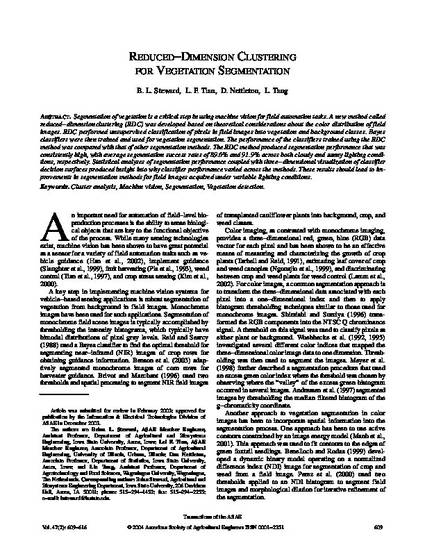
Segmentation of vegetation is a critical step in using machine vision for field automation tasks. A new method called reduced-dimension clustering (RDC) was developed based on theoretical considerations about the color distribution of field images. RDC performed unsupervised classification of pixels in field images into vegetation and background classes. Bayes classifiers were then trained and used for vegetation segmentation. The performance of the classifiers trained using the RDC method was compared with that of other segmentation methods. The RDC method produced segmentation performance that was consistently high, with average segmentation success rates of 89.6% and 91.9% across both cloudy and sunny lighting conditions, respectively. Statistical analyses of segmentation performance coupled with three-dimensional visualization of classifier decision surfaces produced insight into why classifier performance varied across the methods. These results should lead to improvements in segmentation methods for field images acquired under variable lighting conditions.
Available at: http://works.bepress.com/lie_tang/6/

This article is from Transactions of the ASAE, 47, no. 2 (2004): 609–616.